When we think of assistive technology, exoskeletons and prosthetics are two fascinating solutions that often come to mind. Both are designed to enhance mobility and independence, yet they serve unique purposes. Exoskeletons focus on augmenting physical abilities, while prosthetics replace lost ones. However, as technology advances, the line between these two remarkable innovations is starting to blur.
This article explores the overlap between exoskeletons and prosthetics, shedding light on how they complement each other, their unique roles, and how the future might bring them closer together. Whether you’re curious about how these technologies work or looking for insights into their practical applications, this guide will help you understand their similarities, differences, and shared potential to transform lives.
Understanding Exoskeletons: Strength Beyond Limits
Exoskeletons, often referred to as wearable robots, are external devices designed to enhance a person’s physical strength and mobility. They are worn over the body, providing support, power, or rehabilitation to muscles and joints. Originally developed for industrial use and military applications, exoskeletons have found a critical role in healthcare.
Revolutionizing Workplace Productivity
In industrial settings, exoskeletons are becoming indispensable tools. These devices can be used to reduce physical strain on workers performing repetitive or strenuous tasks, such as heavy lifting in warehouses or assembly line work in factories.
By alleviating pressure on the back, shoulders, and knees, exoskeletons not only protect employees from injuries but also extend their productive work life.
For businesses, this means fewer workplace injuries and lower costs related to medical leave, insurance claims, and worker turnover. Companies that adopt exoskeleton technology can also see improvements in task accuracy and speed, as workers are better supported physically.
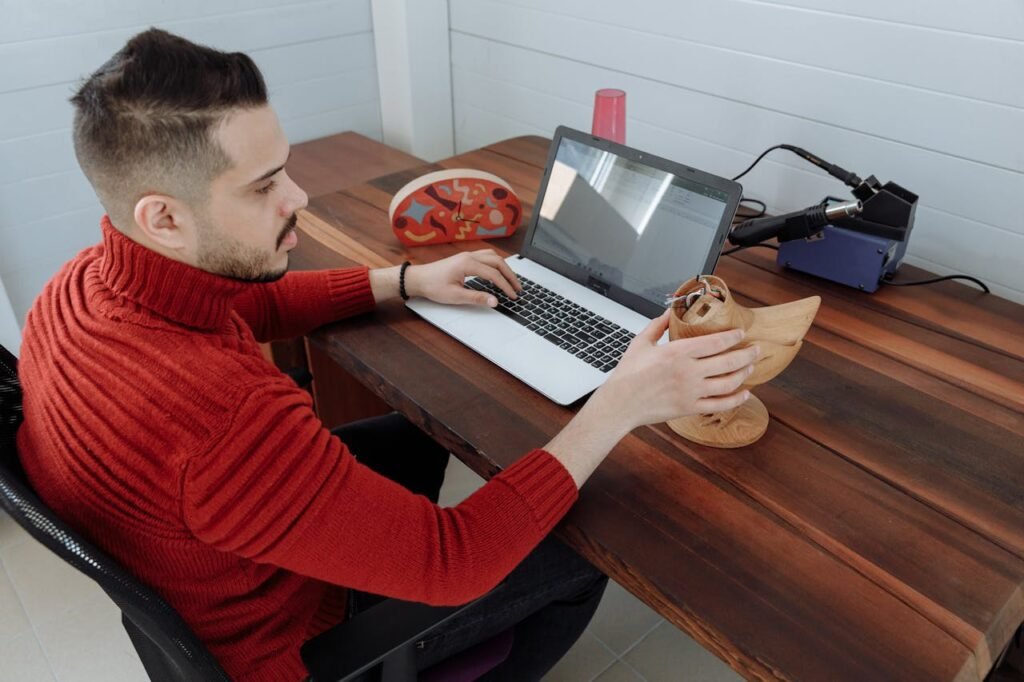
Enhancing Rehabilitation Services
In the healthcare industry, exoskeletons are invaluable for rehabilitation clinics. These devices allow therapists to design personalized programs for patients recovering from neurological or orthopedic injuries. By enabling precise, controlled movements, exoskeletons accelerate recovery times and improve patient outcomes.
For rehabilitation centers, offering exoskeleton-based therapy can serve as a competitive advantage. The technology attracts patients seeking the latest and most effective treatment options, increasing clinic credibility and revenue.
Driving Innovation Through Data
One of the lesser-discussed strengths of exoskeletons is their ability to collect data. Modern devices are equipped with sensors that monitor movement patterns, muscle engagement, and performance metrics. This data can be analyzed to identify areas for improvement, whether in an individual’s rehabilitation program or in workplace ergonomics.
For businesses, this wealth of information is a goldmine for innovation. Data collected from exoskeletons can inform better workplace designs, improve training programs, and even guide the development of next-generation assistive technologies.
Scaling Accessibility Through Cost-Effective Solutions
While the initial investment in exoskeleton technology can be significant, businesses can explore cost-effective models to scale accessibility.
For instance, leasing programs or shared ownership models allow smaller organizations to benefit from this technology without large upfront costs. These approaches make it easier to introduce exoskeletons into a wider range of industries and settings.
Prosthetics: Restoring What Was Lost
Prosthetics serve a different, though equally important, purpose. Unlike exoskeletons, which augment existing abilities, prosthetics replace missing limbs or body parts. These devices are lifelines for individuals with limb loss, enabling them to perform daily activities with greater ease and confidence.
The Shift to Bionic Innovation
Modern prosthetics, such as Robobionics’ Grippy™, are no longer just about enabling movement—they aim to mimic the intricate functions of natural limbs.
With integrated sensors, artificial intelligence (AI), and motorized joints, these devices can perform tasks that were once considered impossible. Users can now type on keyboards, pick up delicate objects, or even sense pressure and temperature.
This shift has profound implications for businesses. Clinics and prosthetic providers that adopt and promote bionic solutions are positioned as pioneers in offering cutting-edge care.
For technology companies, developing or partnering to create such devices opens up a burgeoning market driven by innovation and user demand.
Customization as a Game-Changer
One of the most significant advancements in prosthetics is the emphasis on personalization. Unlike earlier models, which were often standardized, today’s prosthetics are tailored to match the unique needs, body mechanics, and preferences of each user.
This level of customization enhances comfort, functionality, and the overall user experience.
For businesses, offering customizable solutions can be a strategic differentiator. Clinics that provide tailored fittings and adaptive prosthetic solutions can attract a broader user base, including individuals who previously found traditional devices uncomfortable or impractical.
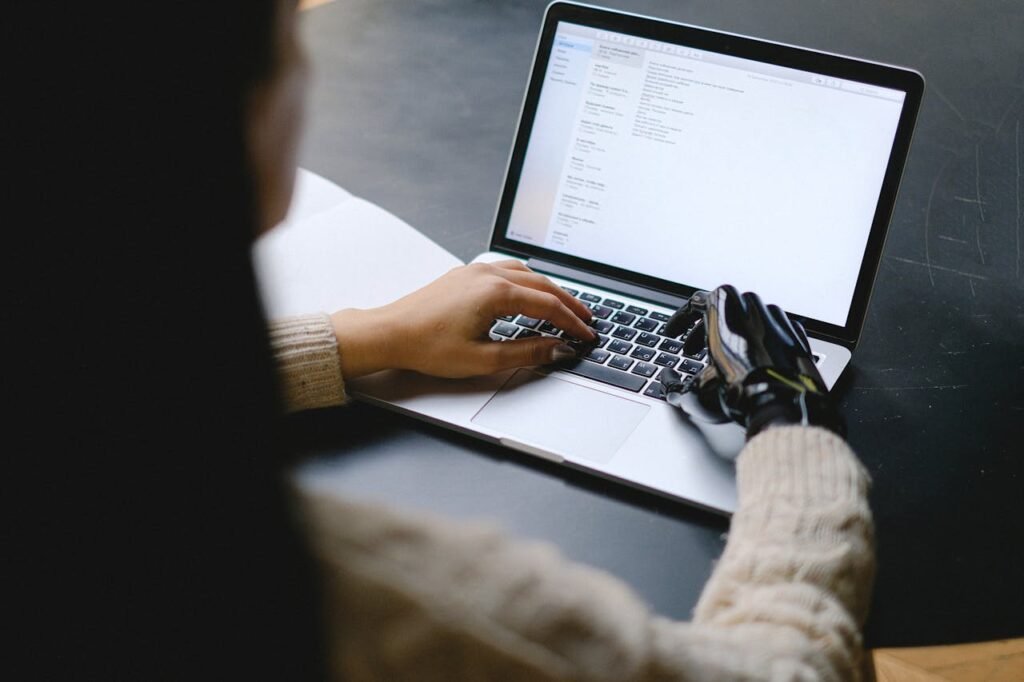
Leveraging Gamified Rehabilitation
A key factor in the successful adoption of prosthetics is rehabilitation. Users must learn to operate their devices effectively, often requiring weeks or months of training.
Gamified rehabilitation, where exercises are designed as interactive and rewarding activities, has proven to be a game-changer in this process.
At Robobionics, we incorporate gamified programs into our prosthetic training, making the adaptation process engaging and accessible.
Businesses that adopt similar approaches can create a more supportive experience for users, leading to better outcomes and stronger customer loyalty.
Affordability and Accessibility: The Business Imperative
While advanced prosthetics are transformative, their high costs can be a barrier for many users. Businesses that prioritize affordability and accessibility can significantly expand their impact and user base.
At Robobionics, our focus on locally designed, 3D-printed prosthetics exemplifies how innovation can lower costs without compromising quality.
For businesses, embracing cost-effective manufacturing methods and localized production can open doors to underserved markets. Offering financing options, installment plans, or partnerships with NGOs can further increase accessibility.
Where Exoskeletons and Prosthetics Meet
While exoskeletons and prosthetics are distinct in purpose, there are areas where they overlap. Both are designed with one primary goal: to improve human mobility and quality of life. As technology advances, these devices are beginning to share features and functions, creating exciting possibilities for the future.
Blurring the Lines Between Augmentation and Replacement
Traditionally, exoskeletons have been viewed as external supports and prosthetics as replacements for missing limbs. However, the rapid advancement in robotics and artificial intelligence (AI) is bridging the gap between the two.
For instance, powered prosthetic limbs are beginning to incorporate features like motorized assistance and real-time gait correction—concepts rooted in exoskeleton technology. Conversely, exoskeletons are adopting modular components and lightweight materials inspired by prosthetic designs to improve user comfort and functionality.
For businesses, this convergence signals a shift in how products are developed and marketed. Instead of viewing these technologies as separate categories, companies can explore hybrid solutions that combine the strengths of both.
For example, a lower-limb prosthetic could integrate an exoskeleton-like powered joint to provide additional support for users tackling uneven terrain or long distances.
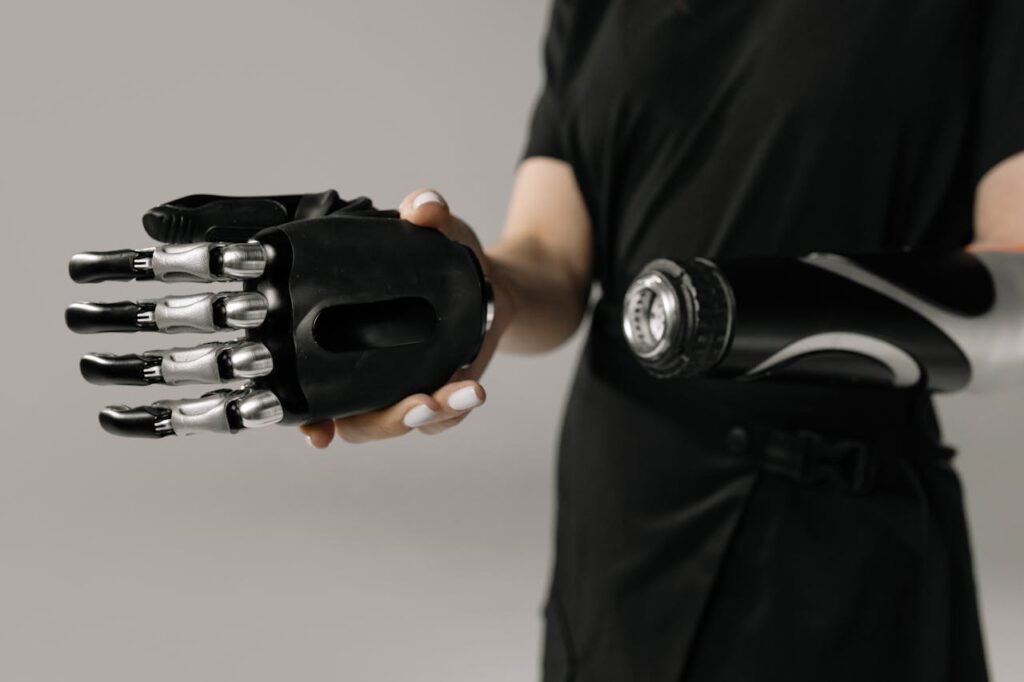
Revolutionizing Rehabilitation with Combined Technologies
One of the most impactful areas of overlap is in rehabilitation. Both exoskeletons and prosthetics are integral to helping individuals regain mobility after injury, surgery, or limb loss.
When used together, they can create a seamless rehabilitation experience. For example, an exoskeleton can provide stability and support during the early stages of therapy, while a prosthetic limb enables patients to gradually transition to more independent movement.
This dual approach not only shortens recovery times but also increases the effectiveness of therapy by addressing different aspects of mobility simultaneously.
Rehabilitation centers that integrate both technologies can offer a more comprehensive and differentiated service, attracting patients seeking advanced care.
The Power of Data Sharing and AI
Both exoskeletons and prosthetics rely heavily on data collection and processing to deliver personalized performance. Sensors embedded in these devices track metrics like muscle activity, gait patterns, and joint angles.
When these devices are used together, the data they generate can be shared to create a more complete picture of a user’s progress and needs.
For example, an exoskeleton can monitor how a user’s body reacts to different levels of support, providing insights that inform the design or adjustment of their prosthetic.
Similarly, a prosthetic limb with built-in sensors can send feedback to an exoskeleton, allowing it to fine-tune its assistance in real time.
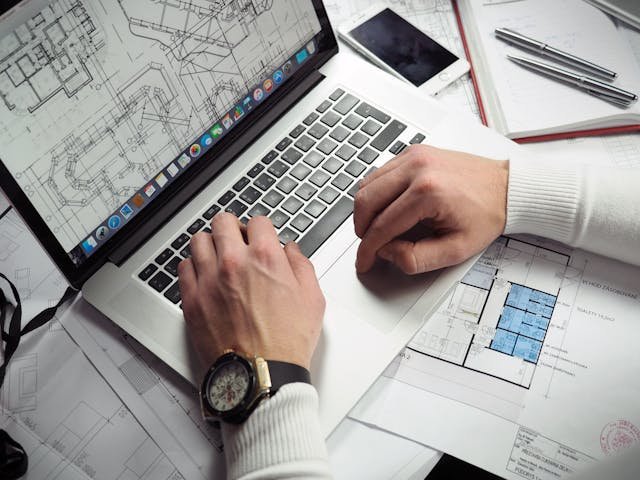
The Role of Gamified Experiences in Combined Use
Gamified rehabilitation programs, already impactful for prosthetic users, can become even more engaging when exoskeletons are part of the process.
For instance, a gamified system could integrate both technologies into a single interactive session where users practice walking, gripping, or balancing. This dual-device approach creates a more dynamic and immersive experience, accelerating skill development and boosting user confidence.
Businesses that offer gamified solutions with integrated technologies not only enhance user engagement but also position themselves as leaders in forward-thinking rehabilitation methods.
The Role of Technology in Bridging the Gap
Advancements in robotics, materials science, and AI are playing a significant role in bringing exoskeletons and prosthetics closer together. Lightweight materials make both devices more comfortable and easier to use, while AI-driven insights improve functionality.
The Rise of Intelligent Assistive Devices
At the heart of this convergence lies intelligence—devices that adapt and respond to their user’s needs in real time. Sensors embedded in prosthetics and exoskeletons track movements, pressure, and muscle signals, while AI analyzes this data to provide personalized adjustments.
For example, a bionic prosthetic hand might sense the strength required to grip an object, while an exoskeleton adjusts its support based on a user’s gait.
For businesses, this intelligent adaptability is more than a feature; it’s a differentiator. Devices that learn and evolve with their users create stronger emotional and functional connections, leading to better user satisfaction and retention.
Material Advancements for Lightweight Design
One challenge shared by exoskeletons and prosthetics is weight. A heavy device can be uncomfortable and impractical, limiting its use. However, breakthroughs in materials science are offering solutions.
Carbon fiber composites, titanium alloys, and advanced polymers are making devices lighter and more durable without sacrificing strength.
For businesses, embracing these materials can improve user satisfaction while expanding market opportunities. Lightweight designs are particularly beneficial for active users, children, or individuals requiring long-term daily use.

Wireless Connectivity for Enhanced User Control
The integration of wireless technology is a game-changer for assistive devices. Bluetooth, Wi-Fi, and IoT-enabled features allow users to control their prosthetics or exoskeletons via smartphones or tablets.
These connections also enable data sharing between devices, creating opportunities for hybrid systems where prosthetics and exoskeletons work together seamlessly.
For businesses, wireless connectivity can extend the functionality of devices, allowing for remote updates, diagnostics, and user customization. This adds significant value to the user experience while reducing the need for in-person adjustments.
Energy Efficiency for Long-Term Use
Power consumption is another area where technology is bridging the gap. Both exoskeletons and advanced prosthetics rely on batteries to operate motorized components, sensors, and connectivity features.
Applications in Healthcare: A Collaborative Future
The integration of exoskeletons and prosthetics is transforming healthcare. Rehabilitation centers worldwide are increasingly combining these technologies to enhance patient outcomes.
For instance, individuals recovering from amputations may use exoskeletons to regain strength and coordination before transitioning to a prosthetic limb. This collaborative approach accelerates recovery and provides a smoother adaptation process for patients.
Rehabilitation Synergies: Enhancing Recovery Pathways
The integration of exoskeletons and prosthetics is most impactful in rehabilitation. Exoskeletons provide immediate support for patients who need assistance with mobility, especially in the early stages of recovery from injuries like spinal cord damage or strokes.
As patients progress, prosthetics offer a natural transition to independent movement, replacing lost limbs or supporting long-term functionality.
The synergy between these devices allows rehabilitation centers to offer a more tailored approach. By combining exoskeletons for guided therapy with prosthetics for real-world application, patients can experience faster, more effective recovery.
Businesses that adopt this dual-device strategy position themselves as leaders in holistic care.
Expanding Tele-Rehabilitation Through Technology
As healthcare increasingly shifts toward telemedicine, exoskeletons and prosthetics are poised to play a central role in remote rehabilitation. Patients can use these devices at home, while clinicians monitor their progress via IoT-enabled sensors and data analytics.
This approach not only enhances accessibility but also reduces the burden on healthcare facilities.
For businesses, tele-rehabilitation offers a scalable model to serve more patients without the need for significant infrastructure expansion. Companies that invest in IoT-compatible devices and user-friendly digital platforms will be well-positioned to capitalize on this trend.
Specialized Applications in Pediatric Care
Children with mobility challenges or limb differences represent a unique patient demographic where exoskeletons and prosthetics can create life-changing impacts.
Pediatric exoskeletons can be used to encourage natural movements, prevent joint contractures, and promote muscle development. Once children are ready, lightweight and adaptive prosthetics help them integrate into everyday activities with confidence.
Businesses that focus on pediatric solutions must consider not only functionality but also comfort and design. Devices that are visually appealing and easy to use can significantly improve adoption rates among children and their families.
Post-Surgical Applications and Prehabilitation
Exoskeletons and prosthetics are increasingly being used in post-surgical recovery and prehabilitation (preparing patients for surgery).
For instance, exoskeletons can help strengthen muscles and improve range of motion before procedures like joint replacement surgeries. Post-surgery, these devices aid in regaining mobility and reducing recovery times.
Businesses that offer prehabilitation and post-surgical care with these technologies can differentiate themselves by providing comprehensive support throughout the patient journey. This approach not only improves outcomes but also fosters long-term relationships with patients.
Challenges in Integration
Despite the exciting overlap between exoskeletons and prosthetics, challenges remain. One significant hurdle is cost. Both technologies rely on advanced materials and sophisticated engineering, making them expensive to produce and maintain. For many individuals, particularly in low-income regions, affordability becomes a barrier to access.
Technological Fragmentation
One of the primary barriers to integrating exoskeletons and prosthetics is technological fragmentation. These devices are often developed by different manufacturers, each using proprietary systems that may not be compatible with one another.
This lack of interoperability can hinder the seamless integration of features, such as data sharing or synchronized movement.
For businesses, overcoming fragmentation requires a commitment to open standards and collaboration across industries. Companies that invest in creating interoperable systems will be better positioned to deliver integrated solutions that meet user needs effectively.
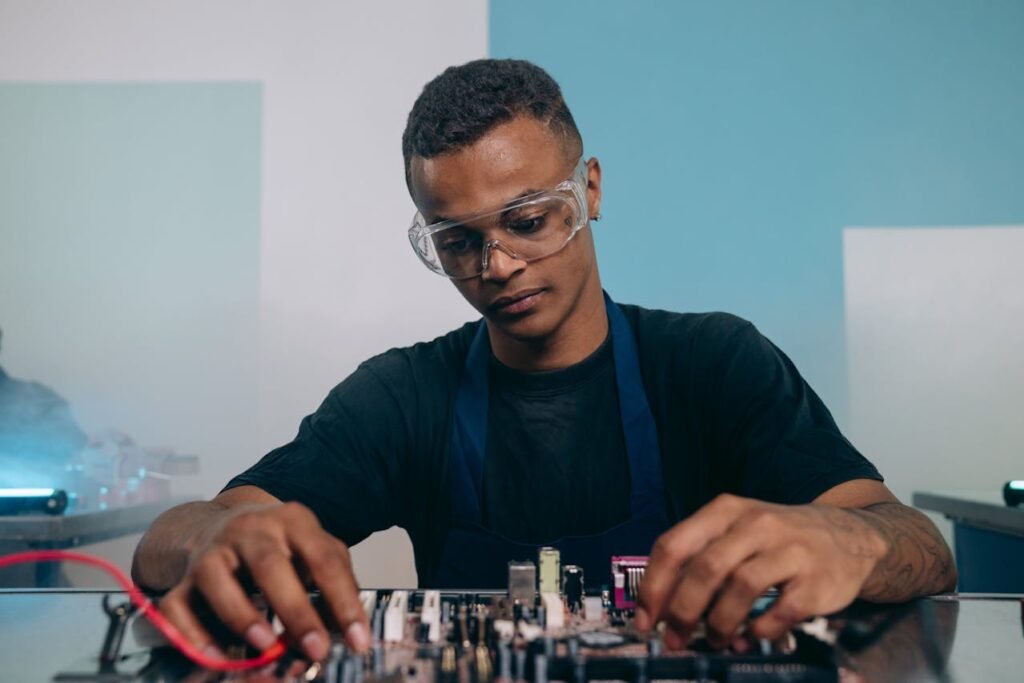
Cost Constraints and Accessibility
Both exoskeletons and prosthetics rely on advanced technology, making them expensive to develop and purchase. For many users, especially in low- and middle-income regions, these costs are prohibitive. Businesses that focus solely on high-end markets risk alienating a large portion of potential users.
Balancing innovation with affordability is essential for scaling accessibility. By leveraging cost-efficient manufacturing methods, such as 3D printing or modular designs, companies can reduce costs without compromising quality.
User Training and Adaptability
The complexity of modern exoskeletons and prosthetics can be intimidating for first-time users. Many devices require extensive training to operate effectively, which can delay adoption and reduce user confidence.
Additionally, the learning curve may discourage potential users from investing in these technologies altogether.
To address this, businesses must prioritize intuitive design and robust training programs. Offering user-friendly interfaces and gamified training modules can make the adaptation process smoother and more engaging.
Regulatory and Safety Challenges
Both exoskeletons and prosthetics must comply with stringent safety standards and regulatory requirements. These regulations, while essential for user safety, can slow down the development and approval processes.
Navigating these frameworks requires significant resources and expertise, particularly for smaller businesses or startups.
To overcome regulatory hurdles, companies must integrate compliance into their development cycles from the outset. Proactively engaging with regulatory bodies and staying updated on changing standards can also help streamline approvals.
Gamified Rehabilitation: The Future of Training
At Robobionics, we believe gamified rehabilitation is key to overcoming user adaptability challenges. By turning training into an engaging and interactive experience, we help users adapt to their prosthetics more quickly and confidently.
Why Gamification Works in Rehabilitation
Gamification leverages the psychological principles of reward and motivation. By turning exercises into games, users are more likely to stay engaged and complete their rehabilitation routines.
Virtual environments, progress tracking, and instant feedback make the process enjoyable, reducing dropout rates and improving long-term outcomes.
For users of exoskeletons, gamification can simulate real-world scenarios, such as climbing stairs or walking on uneven surfaces, in a controlled and safe environment. For prosthetic users, gamified tasks like gripping objects, typing, or playing simple games improve motor skills and hand-eye coordination.
Personalized Rehabilitation Through Gamification
One of the greatest strengths of gamified rehabilitation is its ability to be personalized. By using data from sensors embedded in prosthetics or exoskeletons, businesses can create custom exercises tailored to the user’s progress and goals.
For example, a user recovering from an amputation may start with basic balance exercises and gradually progress to complex tasks like running simulations, all within a gamified platform.
Personalization not only enhances the effectiveness of therapy but also helps build user confidence by allowing them to see measurable progress over time.
Conclusion
Exoskeletons and prosthetics may have different origins and purposes, but their shared goal of enhancing mobility and independence brings them closer together. These technologies are not competitors but complementary forces, each addressing unique challenges while contributing to a larger vision of inclusivity and empowerment.



